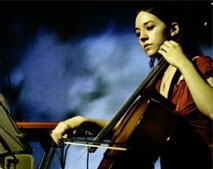Brain structural predispositions for music and language processing
It has been shown that music and language training can elicit plastic changes on brain structure and function bringing along behavioural benefits. For instance, musicians have been reported to have better auditory discrimination including pitch and speech-in-noise perception, motor-synchronization, verbal memory and general IQ than individuals without formal musical background. Also, bilinguals have shown higher executive function and attention-related abilities than monolinguals. Furthermore, altered functional and structural connectivity can be tracked to brain areas related to the activities most frequently performed by both musicians (instrumentalists and singers) and linguistic experts (such as bilinguals or professional phoneticians).
While research in the last decade has devoted important effort to the study of brain plasticity, only a few investigations have addressed the connection between the initial functional or structural properties of brain networks related to auditory-motor function and subsequent language or musical training. Indeed, brain structural markers such as grey matter volume/density or white-matter diffusivity measurements from diffusion tensor imaging (DTI) data, as well as functional measurements from task-related activity or resting-state data from magnetic resonance imaging (MRI) or electroenceplhalography (EEG) have been demonstrated to correlate with consecutive performance and learning in the auditory-motor domain.
The main goal of the present dissertation was twofold: we aimed to further the existing knowledge regarding brain plasticity elicited during putative sensitive periods and after long-term music practice, and to explore the white-matter pathways that predict linguistic or musical skills at baseline. Our secondary goals were to confirm previous findings regarding the brain structures involved in music and language processing, as well as to provide evidence of the benefits of using structural measurements and correlational analyses between imaging and behavioural data to study inter-individual differences.
Study I focused on the comparison between professional pianists and non-musicians observing a complex pattern of increases and decreases in grey matter volume. In comparison to non-musician individuals, pianists showed greater grey matter volume in areas related to motor skill and the automatization of learned movements, as well as reinforcement learning and emotional processing. On the other hand, regions associated to sensorimotor control, score reading and auditory and musical perception presented a reduction in grey matter volume.
Study II explored the relationship between white-matter structural properties of the arcuate fasciculus (AF) and the performance of native German speakers in a foreign-language (Hindi) sentence and word imitation task. We found that a greater left lateralization of the AF volume predicted performance on the imitation task. This result was confirmed by using not only a manual deterministic approach but also an automatic atlas-based fibre-reconstruction method, which in addition pointed out to a specific region in the anterior half of the left AF as the most related to imitation ability.
Study III aimed to investigate whether the white-matter structural connectivity of the pathways previously described as targets for plasticity mechanisms in professional musicians predicted musical abilities in non-musicians. We observed that the white-matter microstructural organization of the right hemisphere pathways involved in motor-control (corticospinal tract) and auditory-motor transformations (AF) correlated with the performance of non-musician individuals during the initial stages of rhythmic and melodic learning.
The present work confirmed the involvement of several brain structures previously described to display plastic effects associated to music and language training in the first stages of audio-motor learning. Furthermore, they challenge previous views regarding music-induced plasticity by showing that expertise is not always or uniquely correlated with increases in brain tissue. This raises the question of the role of efficiency mechanisms derived from professional-like practice.
Most importantly, the results from these three studies converge in showing that a prediction-feedback-feedforward loop for auditory-motor processing may be crucially involved in both musical and language learning and skills. We thus suggest that brain auditory-motor systems previously described as participating in native language processing (cortical areas of the dorsal route for language processing and the AF that connects them) may also be recruited during exposure to new linguistic or musical material, being refined after sustained music practice.

